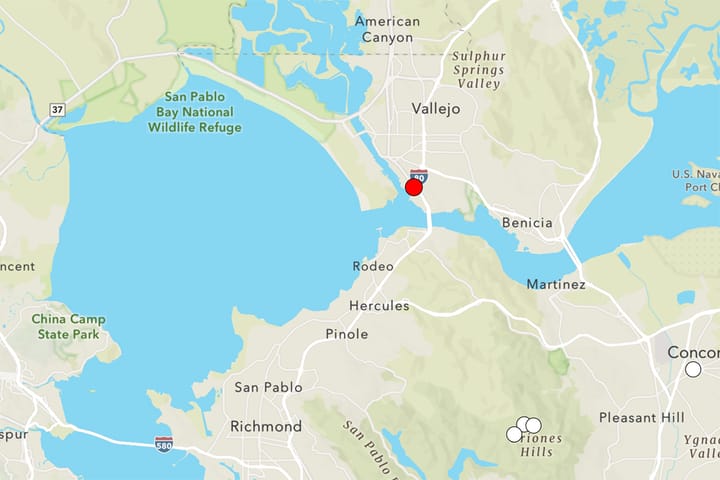Taller buildings planned in 3 Berkeley districts — and they might surprise you
The city has launched a survey to collect input in the coming weeks on the Berkeley Corridors Zoning Update project. What is it?

A draft plan to allow denser development in three of Berkeley's "highest-resource and highest-income" neighborhoods has already met with skepticism in at least some quarters.
Now, the city has launched a survey to collect input on the project in the coming weeks.
The proposal, dubbed the Berkeley Corridors Zoning Update, is focused on three commercial districts: College Avenue in the Elmwood district; Solano Avenue in North Berkeley; and the North Shattuck neighborhood, from Virginia Street up to Rose Street.
"These corridors, designated as priority areas in the [state-mandated] Housing Element 2023-31, are vital hubs for housing, commerce, and transit," according to city materials. "This initiative aims to increase housing capacity, address development challenges, and promote equity while preserving the unique character of each corridor."
Berkeley Corridors Zoning Update: How many new units?
The plan could add at least 1,100 new housing units — and as many as 1,780 — across the districts in the coming years: 650-1,000 on North Shattuck; 400-650 on Solano; and 50-130 on College Avenue, according to current estimates.
The city has estimated that "approximately 15% of projected units (200-230 units)" would be classified as affordable.
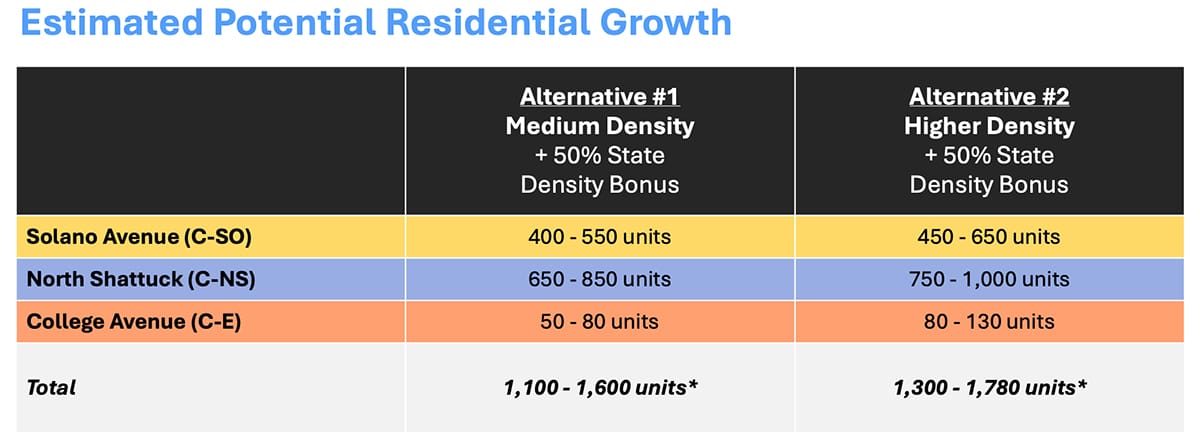
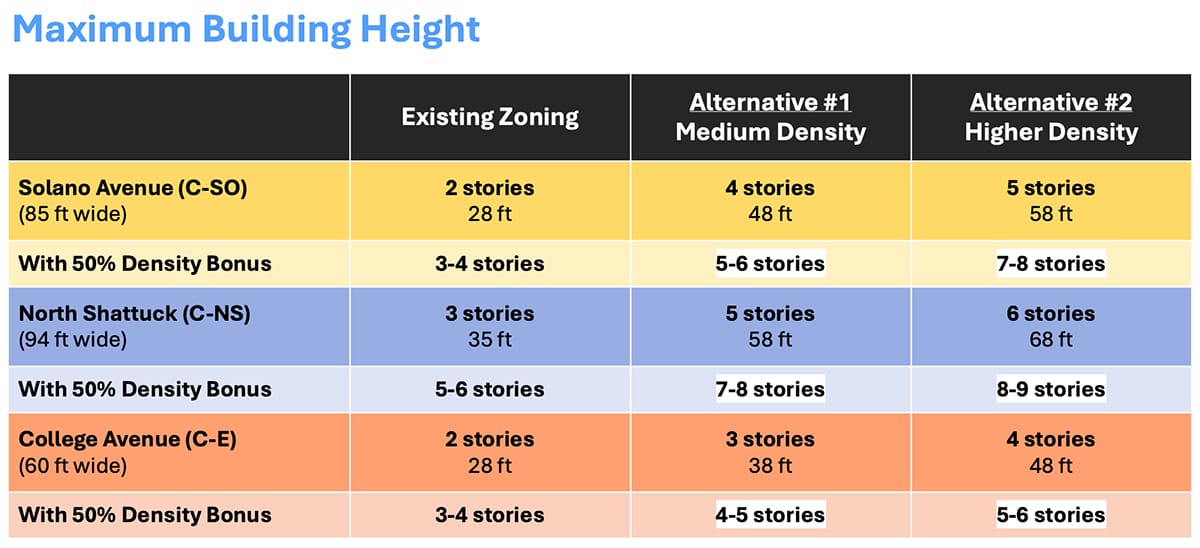
To accomplish that goal, the city would need to increase building heights in each neighborhood, from 3 stories up to as many as 9 stories on North Shattuck; from 2 stories up to as many as 8 stories on Solano; and from 2 stories up to potentially 6 stories on College Avenue, the city has said.
The plan is still in the draft stages, with both medium and higher density alternatives under consideration — and construction still years in the future, according to the city.
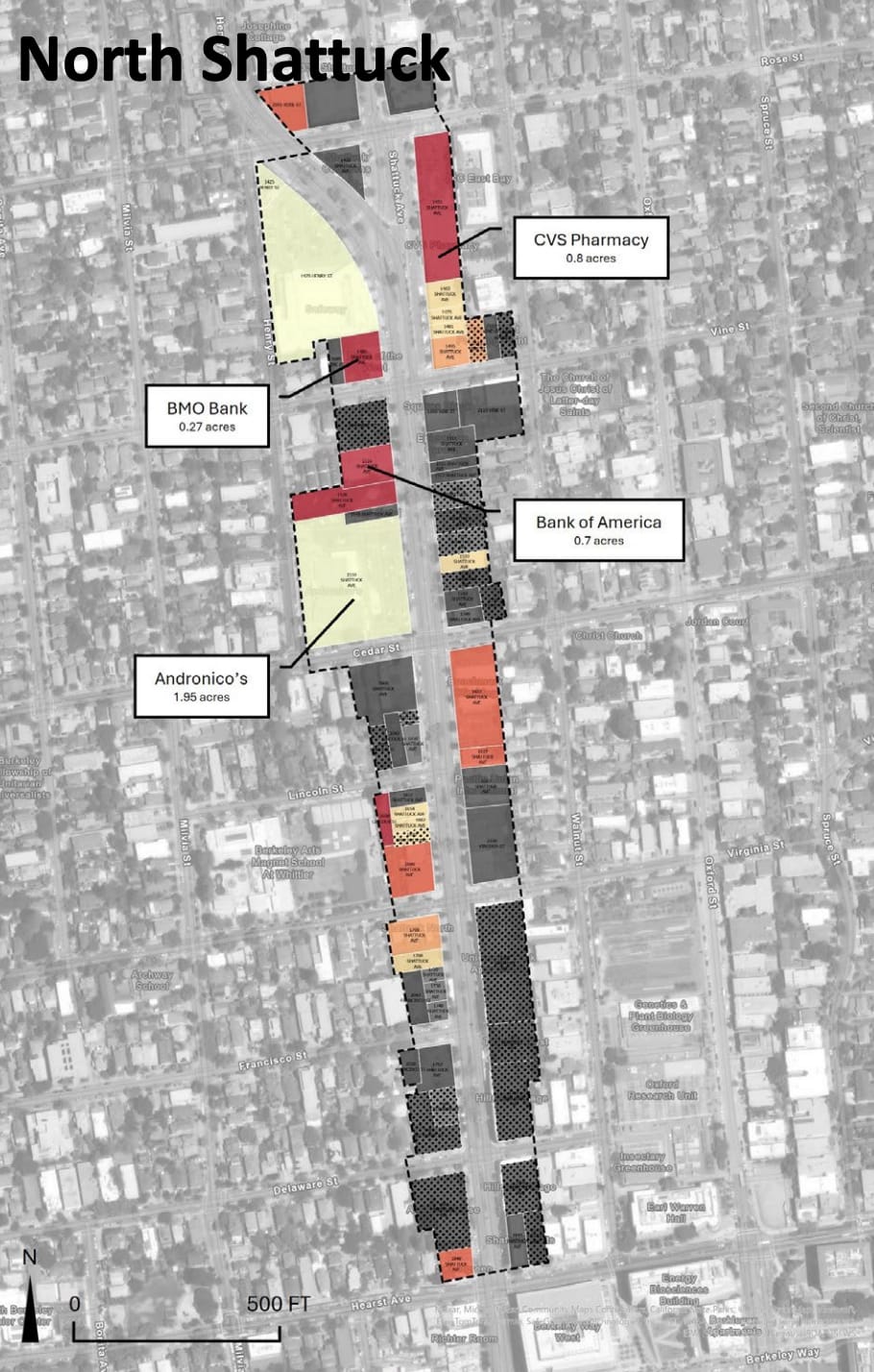
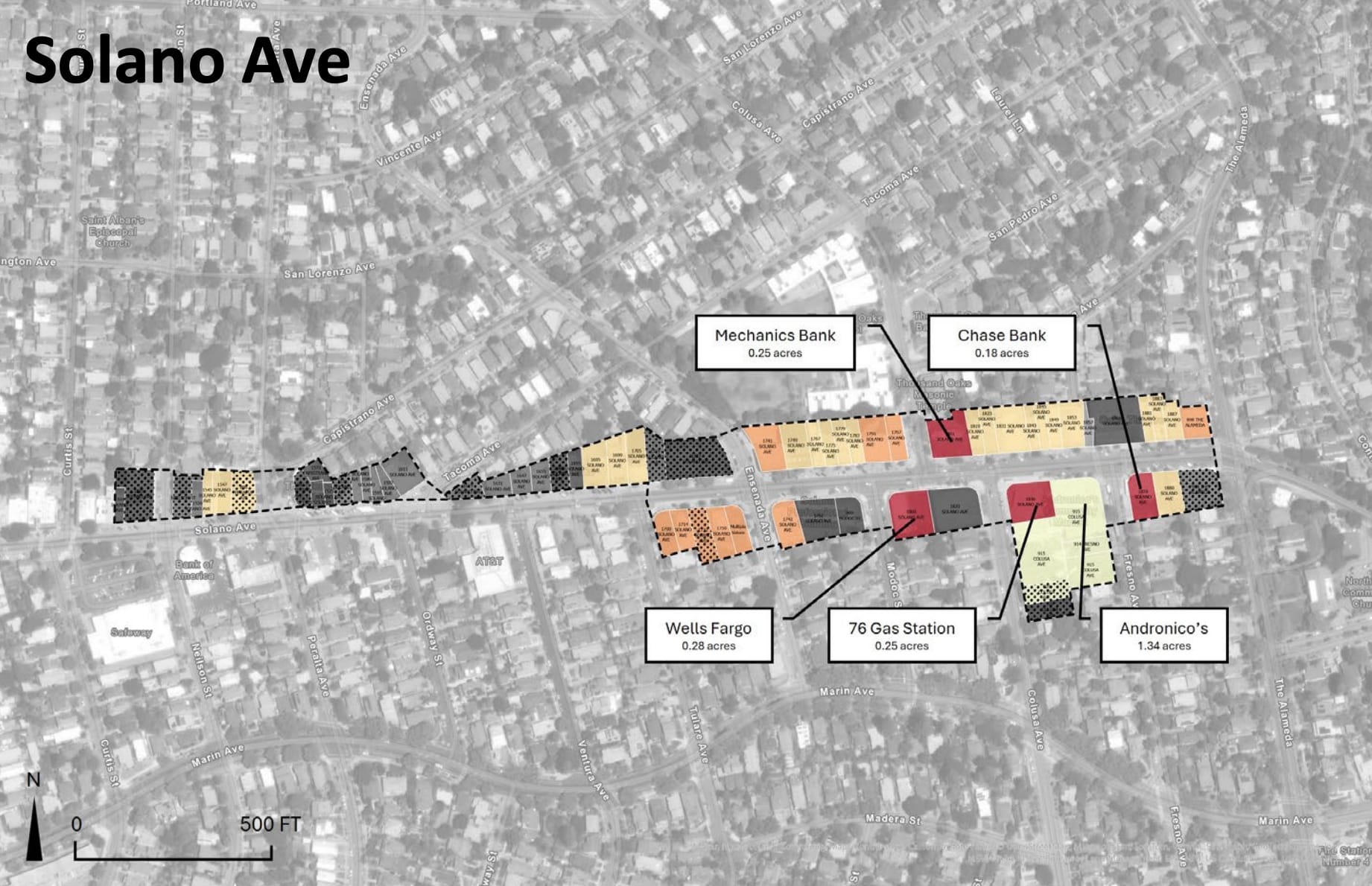
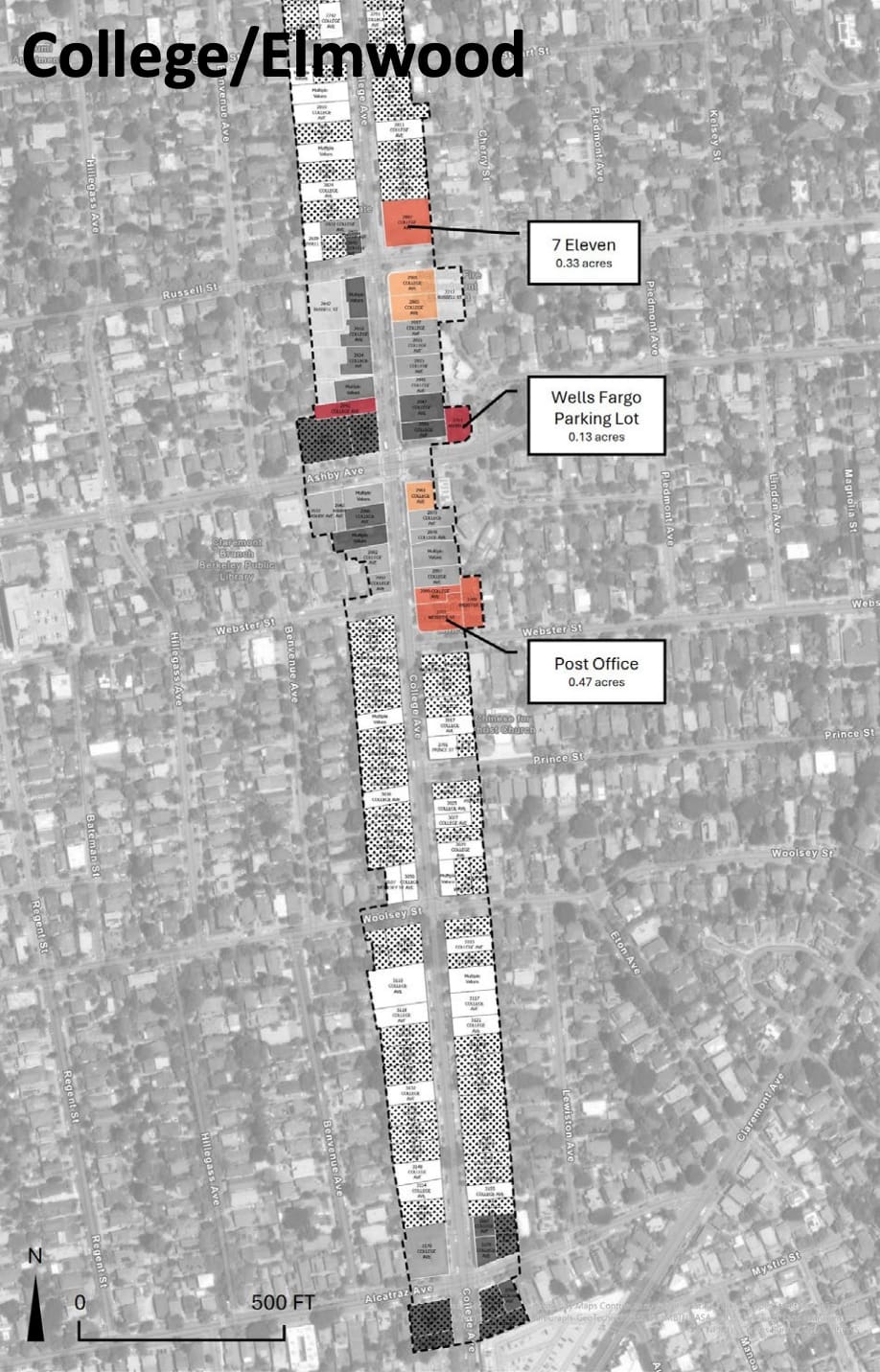
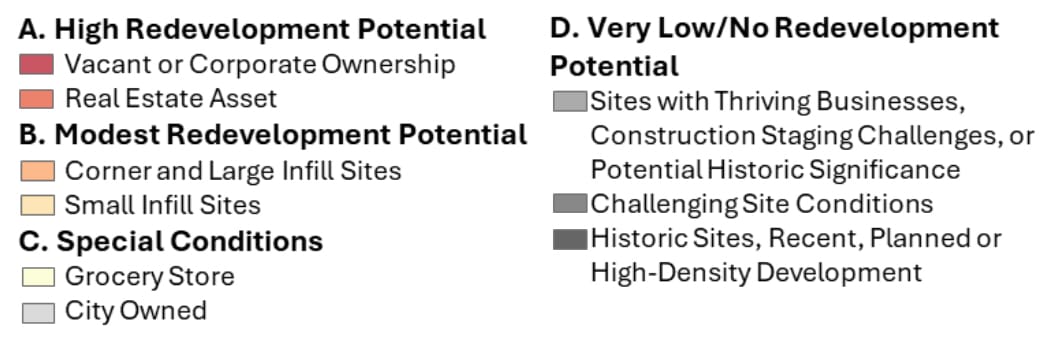
Redevelopment potential: The city has classified lots in each area as high or modest potential; special conditions; or very low/no potential. Click each image to view it larger. City of Berkeley
In recent weeks, the city held community workshops in each priority neighborhood to raise awareness about the plan following a kick-off meeting in May.
At the Elmwood meeting, Councilman Mark Humbert described the project as an equity-focused effort "to ensure Berkeley is helping make housing available and affordable for its workers, its middle class and future generations."
Some members of the crowd, including those who were upset that the meeting format did not include public comment, called for his recall.
Humbert assured constituents and local business owners that he was listening and said they would have many chances to make public comments and offer feedback in the months ahead.
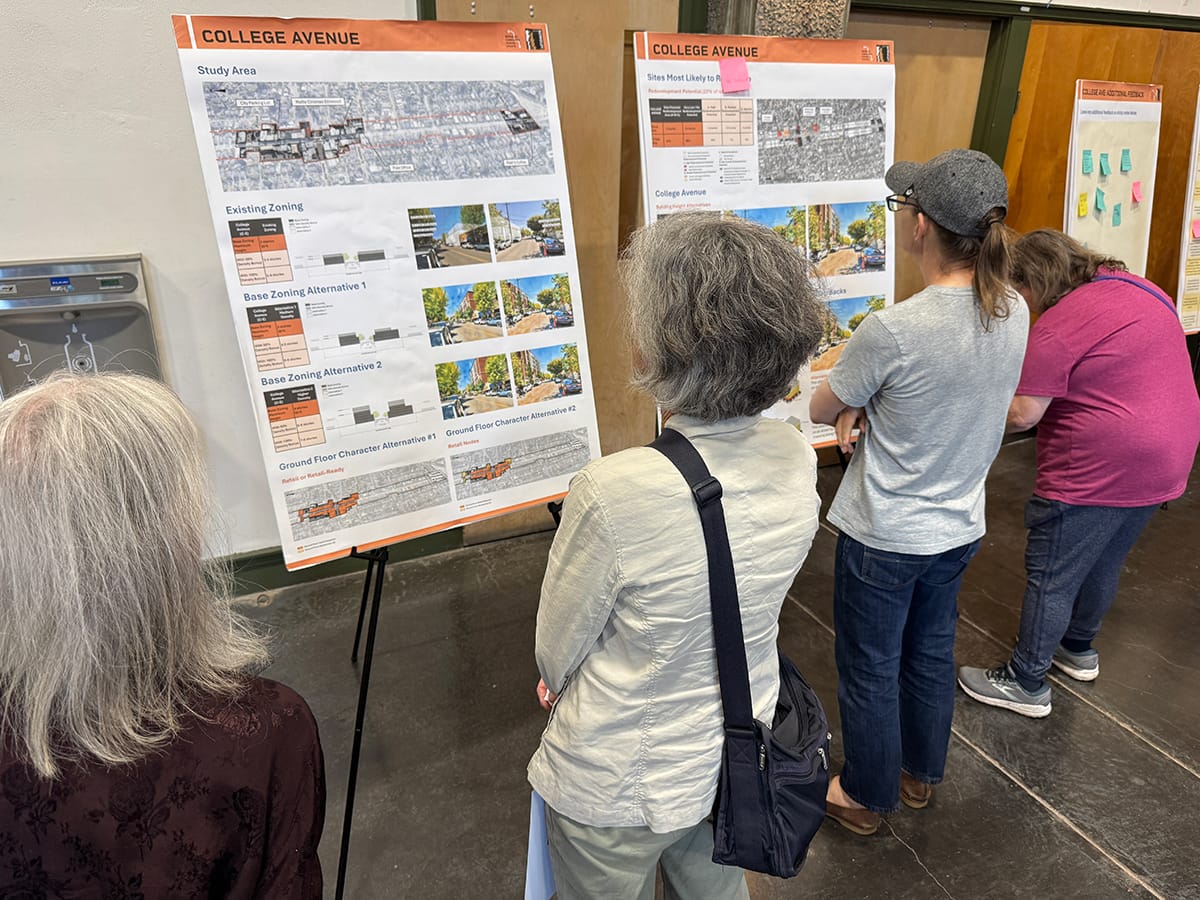
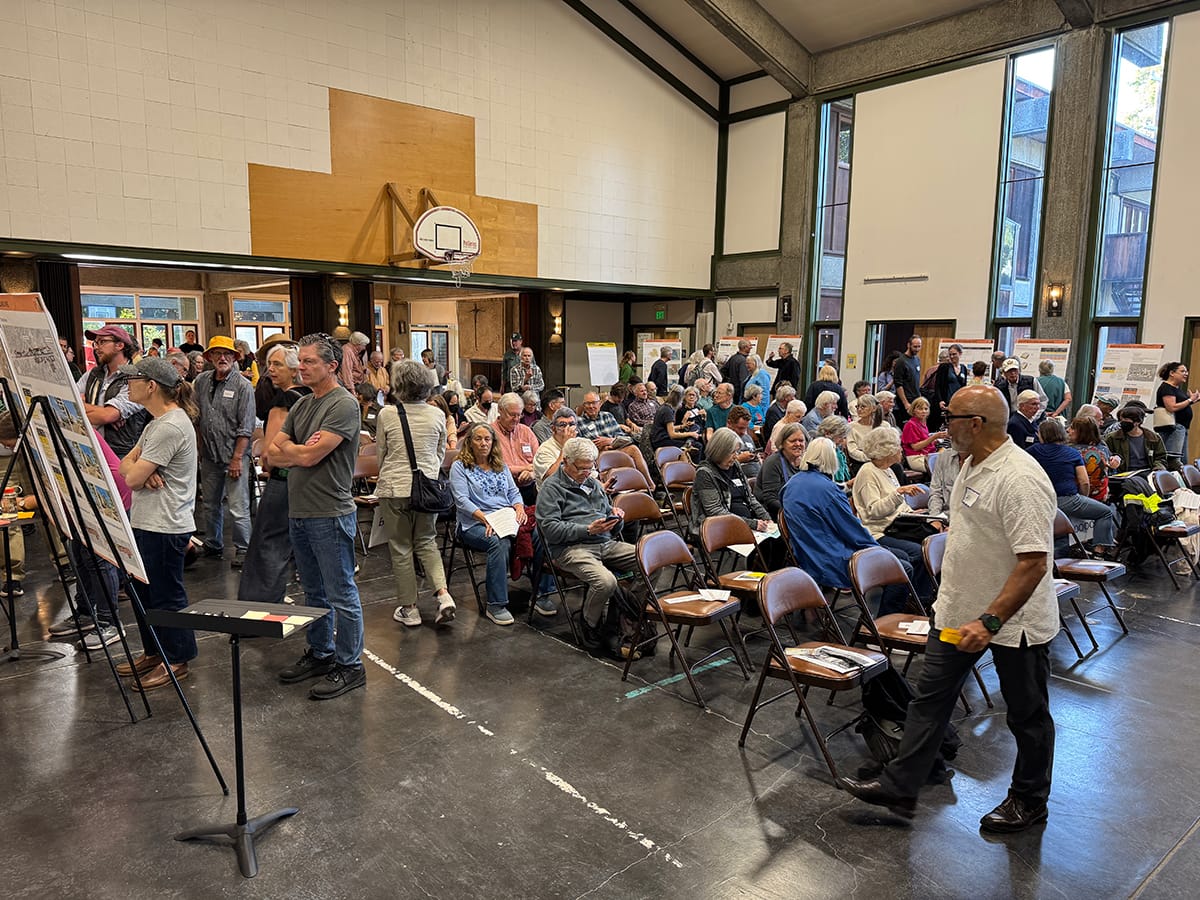

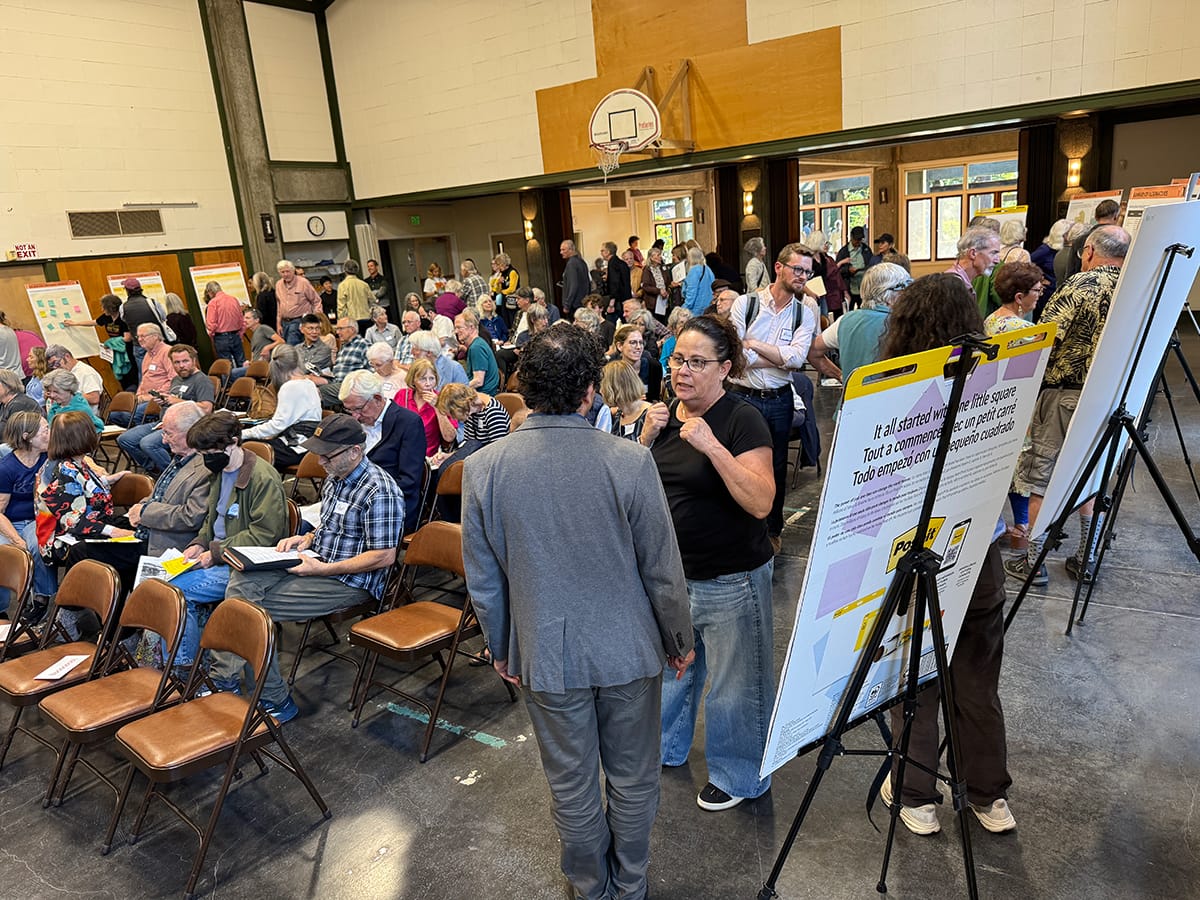
The Elmwood zoning meeting took place Aug. 26 at St. John’s Presbyterian Church. Emilie Raguso/TBS
In each of the meetings, the project team described which sites in each district had the highest potential for development, and what percentage of each district could potentially change.
In the Elmwood district, those sites are the 7-Eleven at College and Russell Street, the U.S. Post Office at College and Webster Street, and the Wells Fargo parking lot at College and Ashby avenues.
The Solano Avenue sites include the 76 gas station and three banks: Wells Fargo, Mechanics Bank and Chase Bank.
The North Shattuck sites include CVS Pharmacy, Bank of America and BMO Bank.
After an overview by the project team, attendees were able to take a closer look at various aspects of the plan and speak with consultants and city staff at stations that had been set up around the room.
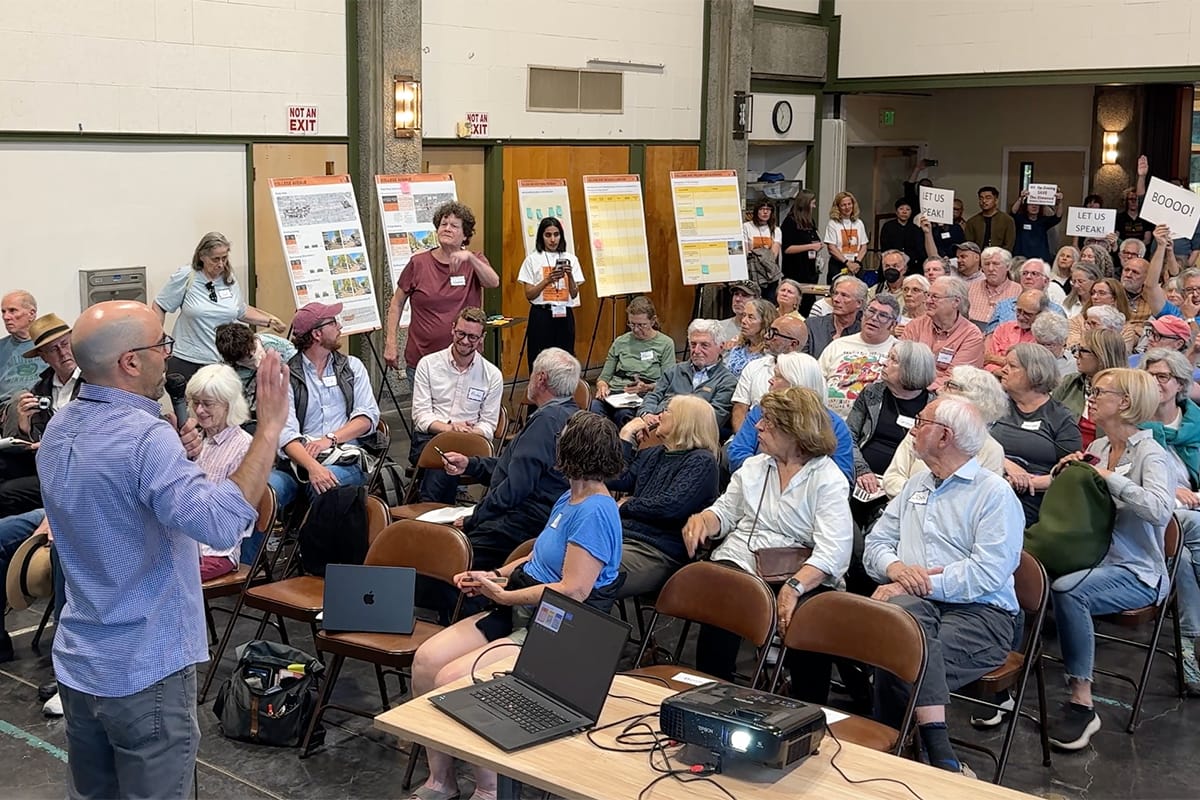
At the Elmwood meeting, many attendees expressed strong resistance to the proposal, sharing concerns about neighborhood construction impacts and the potential loss of key services, like the post office.
Some said they had not been reassured by city attempts to put the plan in context by emphasizing that the Elmwood district had the least development potential of all three neighborhoods under review.
" We take this feedback seriously," one project team member assured attendees. "We take this to heart. And we'll continue to explore strategies to mitigate these impacts."
In addition to the new survey, which runs through Oct. 10, the city has planned several public meetings between now and April 2026, with the first set for Wednesday night, Sept. 17, before the Planning Commission.
A City Council study session is expected in November.
Learn more and sign up for updates from the city about the Berkeley Corridors Zoning Update. Read more City Council coverage on The Scanner.




